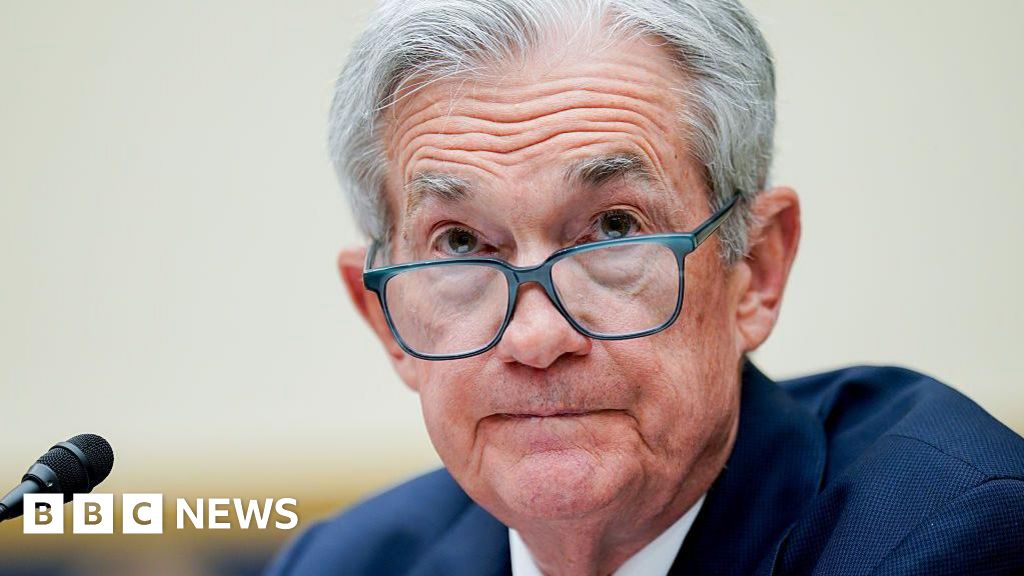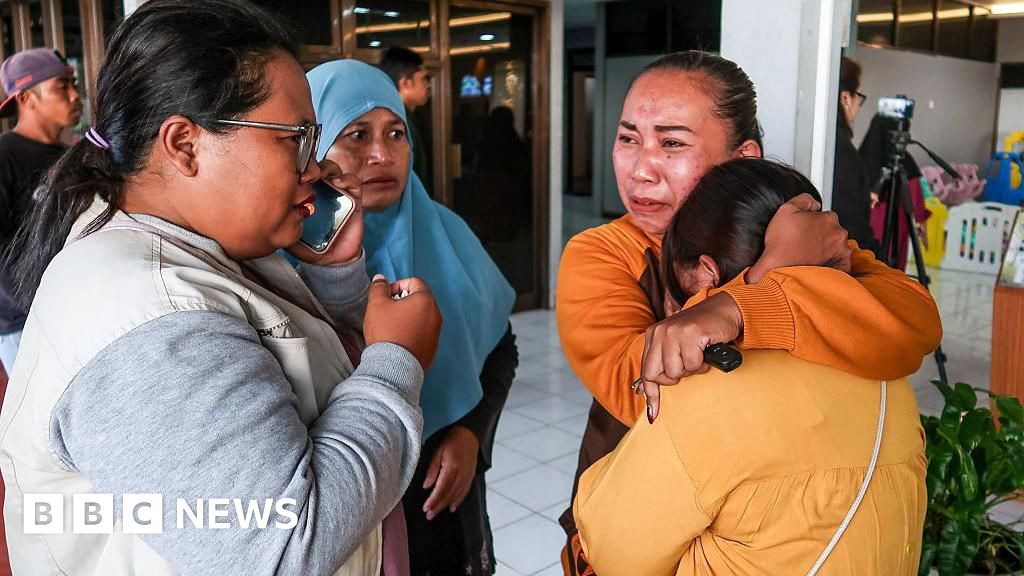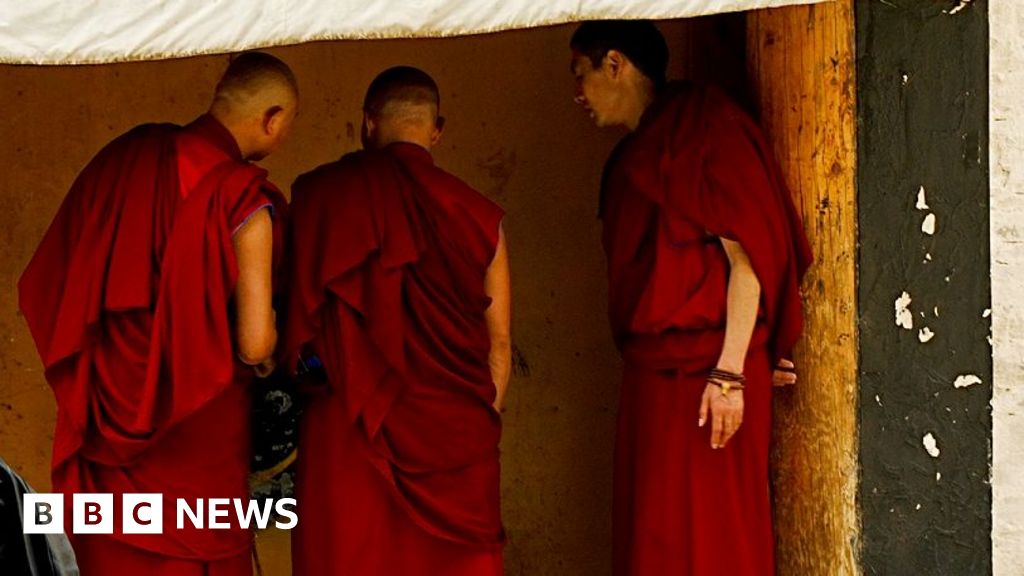 AFP
AFPTo live along the Line of Control (LoC) – the volatile de facto border that separates India and Pakistan – is to exist perpetually on the razor’s edge between fragile peace and open conflict.
The recent escalation after the Pahalgam attack brought India and Pakistan to the brink once again. Shells rained down on both sides of the LoC, turning homes to rubble and lives into statistics. At least 16 people were reportedly killed on the Indian side, while Pakistan claims 40 civilian deaths, though it remains unclear how many were directly caused by the shelling.
“Families on the LoC are subjected to Indian and Pakistani whims and face the brunt of heated tensions,” Anam Zakaria, a Pakistani writer based in Canada, told the BBC.
“Each time firing resumes many are thrust into bunkers, livestock and livelihood is lost, infrastructure – homes, hospitals, schools – is damaged. The vulnerability and volatility experienced has grave repercussions for their everyday lived reality,” Ms Zakaria, author of a book on Pakistan-administered Kashmir, said.
India and Pakistan share a 3,323km (2,064-mile) border, including the 740km-long LoC; and the International Border (IB), spanning roughly 2,400km. The LoC began as the Ceasefire Line in 1949 after the first India-Pakistan war, and was renamed under the 1972 Simla Agreement.
The LoC cutting through Kashmir – claimed in full and administered in parts by both India and Pakistan – remains one of the most militarised borders in the world. Conflict is never far behind and ceasefires are only as durable as the next provocation.
Ceasefire violations here can range from “low-level firing to major land grabbing to surgical strikes”, says Happymon Jacob, a foreign policy expert at Delhi’s Jawaharlal Nehru University (JNU). (A land grab could involve seizing key positions such as hilltops, outposts, or buffer zones by force.)
The LoC, many experts say, is a classic example of a “border drawn in blood, forged through conflict”. It is also a line, as Ms Zakaria says, “carved by India and Pakistan, and militarised and weaponised, without taking Kashmiris into account”.
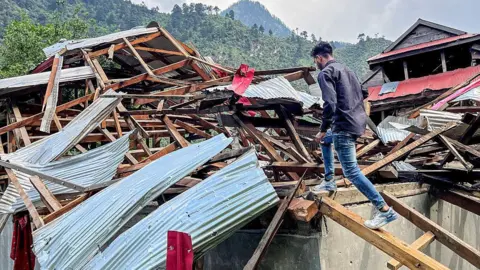 Getty Images
Getty ImagesSuch wartime borders aren’t unique to South Asia. Sumantra Bose, a professor of international and comparative politics at the London School of Economics, says the most well-known is the ‘Green Line’ – the ceasefire line of 1949 – which is the generally recognised boundary between Israel and the West Bank.
Not surprisingly, the tentative calm along the LoC that had endured since the 2021 ceasefire agreement between the two nuclear-armed neighbours crumbled easily after the latest hostilities.
“The current escalation on the LoC and International Border (IB) is significant as it follows a four-year period of relative peace on the border,” Surya Valliappan Krishna of Carnegie India told the BBC.
Violence along the India-Pakistan border is not new – prior to the 2003 ceasefire, India reported 4,134 violations in 2001 and 5,767 in 2002.
The 2003 ceasefire initially held, with negligible violations from 2004 to 2007, but tensions resurfaced in 2008 and escalated sharply by 2013.
Between 2013 and early 2021, the LoC and the IB witnessed sustained high levels of conflict. A renewed ceasefire in February 2021 led to an immediate and sustained drop in violations through to March 2025.
“During periods of intense cross-border firing we’ve seen border populations in the many thousands be displaced for months on end,” says Mr Krishna. Between late September and early December 2016, more than 27,000 people were displaced from border areas due to ceasefire violations and cross-border firing.
 Getty Images
Getty ImagesIt’s looking increasingly hairy and uncertain now.
Tensions flared after the Pahalgam attack, with India suspending the key water-sharing treaty between India and Pakistan, known as the Indus Waters Treaty (IWT). Pakistan responded by threatening to exit the 1972 Simla Agreement, which formalised the LoC – though it hasn’t followed through yet.
“This is significant because the Simla Agreement is the basis of the current LoC, which both sides agreed to not alter unilaterally in spite of their political differences,” says Mr Krishna.
Mr Jacob says for some “curious reason”, ceasefire violations along the LoC have been absent from discussions and debates about escalation of conflict between the two countries.
“It is itself puzzling how the regular use of high-calibre weapons such as 105mm mortars, 130 and 155mm artillery guns and anti-tank guided missiles by two nuclear-capable countries, which has led to civilian and military casualties, has escaped scholarly scrutiny and policy attention,” Mr Jacob writes in his book, Line On Fire: Ceasefire Violations and India-Pakistan Escalation Dynamics.
Mr Jacob identifies two main triggers for the violations: Pakistan often uses cover fire to facilitate militant infiltration into Indian-administered Kashmir, which has witnessed an armed insurgency against Indian rule for over three decades. Pakistan, in turn, accuses India of unprovoked firing on civilian areas.
He argues that ceasefire violations along the India-Pakistan border are less the product of high-level political strategy and more the result of local military dynamics.
The hostilities are often initiated by field commanders – sometimes with, but often without, central approval. He also challenges the notion that the Pakistan Army alone drives the violations, pointing instead to a complex mix of local military imperatives and autonomy granted to border forces on both sides.
Some experts believe It’s time to revisit an idea shelved nearly two decades ago: turning the LoC into a formal, internationally recognised border. Others insist that possibility was never realistic – and still isn’t.
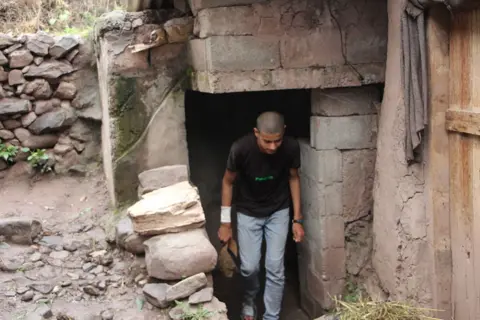 Getty Images
Getty Images“The idea is completely infeasible, a dead end. For decades, Indian maps have shown the entire territory of the erstwhile princely state of Jammu and Kashmir as part of India,” Sumantra Bose told the BBC.
“For Pakistan, making the LoC part of the International Border would mean settling the Kashmir dispute – which is Pakistan’s equivalent of the Holy Grail – on India’s preferred terms. Every Pakistani government and leader, civilian or military, over the past seven decades has rejected this.”
In his 2003 book, Kashmir: Roots of Conflict, Paths to Peace, Prof Bose writes: “A Kashmir settlement necessitates that the LoC be transformed – from an iron curtain of barbed wire, bunkers, trenches and hostile militaries to a linen curtain. Realpolitik dictates that the border will be permanent (albeit probably under a different name), but it must be transcended without being abolished.”
“I stressed, though, that such a transformation of the LoC must be embedded in a broader Kashmir settlement, as one pillar of a multi-pillared settlement,” he told the BBC.
Between 2004 and 2007, turning the LoC into a soft border was central to a fledgling India-Pakistan peace process on Kashmir – a process that ultimately fell apart.
Today, the border has reignited, bringing back the cycle of violence and uncertainty for those who live in its shadow.
“You never know what will happen next. No one wants to sleep facing the Line of Control tonight,” an employee of a hotel in Pakistan-administered Kashmir told BBC Urdu during the recent hostilities.
It was a quiet reminder of how fragile peace is when your window opens to a battlefield.
Source link
